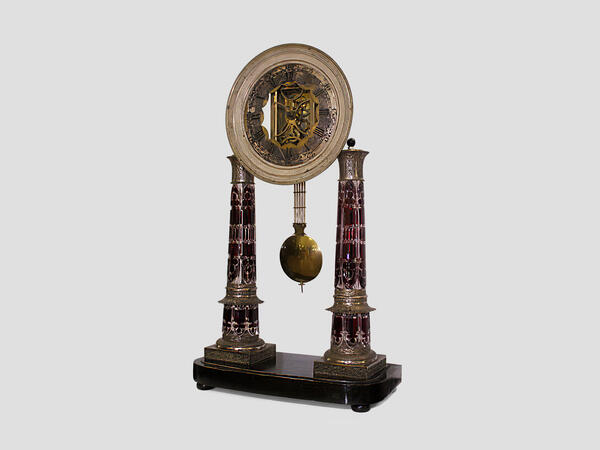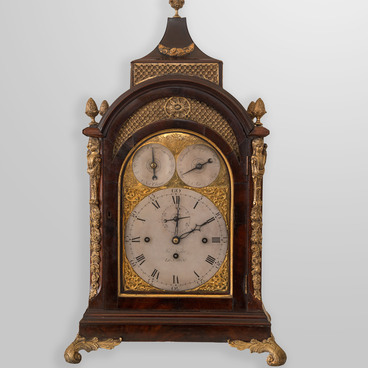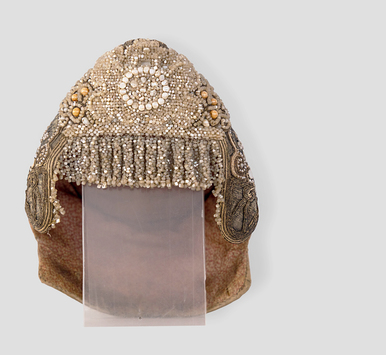Skeleton clocks catch the eye with their fully or partially visible mechanism. The displayed clock has a lightweight case, and its moving parts can be seen through a special window in the dial. Such models appeared in Europe in the 16th — 17th centuries. Later, they were replaced by traditional clocks with the mechanism hidden inside the case and became a luxury item.
Clockmakers and jewelers turned skeleton clocks into true masterpieces. They decorated the clocks with precious stones, polished and engraved their miniature components, and coated them with precious metals to improve durability. The mechanism was assembled by hand.
The 19th century was the golden age of Russian clockmaking. A clock making school was established in St. Petersburg, and small private workshops were opened across the country to assemble clocks from imported parts.
In the 1820s–1830s, a great number of clocks designed by the best Western European clockmakers were imported. In the second half of the 19th century, Swiss-made mechanisms were recognized by Russian customers as the best clocks available.
The displayed clock was created jointly by the Russian clockmaker Fyodor Serebryakov and the craftsmen of the Nikolsko-Bakhmetevsky Crystal Factory in Penza Governorate.
On the clock face, the hours are indicated using Roman numerals, and the minutes are shown using Arabic numerals. The clock face is enclosed in a gilded metal frame with an engraved geometric pattern. The arched pattern of the crystal columns is depicted on colored two-layer glass using a diamond-shaped cut.
The diamond-shaped cut became popular in Russia in the early 19th century. First, a pattern in the form of rays or a grid is applied to the glass surface. After that, the glass is cut to a certain depth to obtain convex pyramids and wedge-shaped groove facets, creating a play of light.
For a long time, the displayed clock was kept on a
desk in one of the offices of the Penza Treasury Chamber. In 1864, Mikhail
Saltykov-Shchedrin was appointed chairman of the Chamber.



